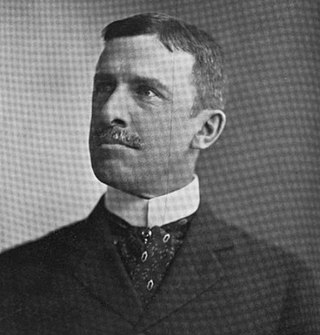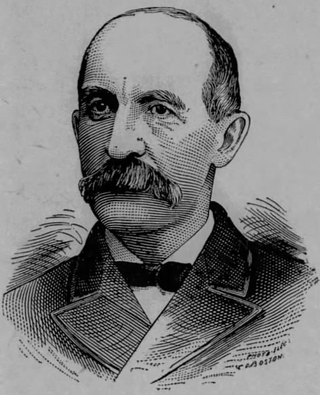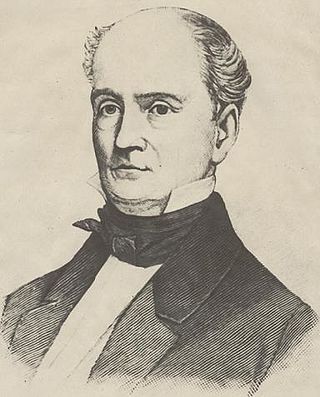
Ernest William Gibson Jr. was an American attorney, politician, and judge. He served briefly as an appointed United States Senator, as the 67th governor of Vermont, and as a federal judge.

Lawrence Brainerd was an American businessman, abolitionist and United States Senator from Vermont. A longtime anti-slavery activist, after leaving the Jacksonians in the 1830s, Brainerd was active in the Whig, Liberty, and Free Soil parties, and was one of the organizers of the Republican Party when it was formed as the main anti-slavery party in the mid-1850s. Brainerd's longtime commitment to the cause of abolition was recognized in 1854, when opponents of slavery in the Vermont General Assembly chose him to fill a five-month vacancy in the United States Senate.

Edward Curtis Smith was an American attorney, businessman, and politician from Vermont. A Republican, he was most notable for his service as the 47th governor of Vermont from 1898 to 1900.

Frederick Holbrook was an American farmer, businessman, and Governor of the State of Vermont. Active in politics and government, first as a Whig, and later as a Republican, he was most notable for his service as the 27th governor of Vermont from 1861 to 1863.

Peter Thacher Washburn was a Vermont lawyer, politician and soldier. A veteran of the American Civil War, he served as the 31st governor of Vermont as a Republican from 1869 to 1870, and was the second Vermont Governor to die in office.

Henry Addison Fletcher was an American Civil War veteran, a farmer and a U.S. politician of the Republican Party. He is most notable for his service as the 38th lieutenant governor of Vermont from 1890 to 1892.
The Vermont Republican Party is the affiliate of the Republican Party in Vermont and has been active since its foundation in the 1860s. The party is the second largest in the state behind the Vermont Democratic Party, but ahead of the Vermont Progressive Party. The party historically dominated Vermont politics until the mid-20th century, but was replaced by the Vermont Democratic Party. The party currently has very weak federal electoral power in the state, controlling none of Vermont's federal elected offices. The two statewide offices that the party currently controls are the governorship, held by Phil Scott, and the lieutenant governorship, held by John S. Rodgers.

George Whitman Hendee was a Vermont lawyer, banker, and politician who served as President of the Vermont State Senate, the 27th lieutenant governor, 32nd governor of Vermont, and a U.S. Representative.

Stephen Royce was an American lawyer, judge and politician. Originally a Democratic-Republican, and later a Whig Party, he became a Republican when the party was formed in the mid-1850s. Royce served as an associate justice of the Vermont Supreme Court from 1829 to 1846, chief justice from 1846 to 1852, and 23rd governor of Vermont from 1854 to 1856.

Levi K. Fuller was an American businessman, military officer, and politician. A Republican, he served in the Vermont Senate from 1880 to 1882, as lieutenant governor from 1886 to 1888, and the 44th governor of Vermont from 1892 to 1894.

Levi Underwood was a lawyer and politician from Vermont. Originally a Democrat, Underwood's antislavery views caused him to join the new Republican Party when it was founded. Underwood was most notable for his service as the 23rd lieutenant governor of Vermont from 1860 to 1862.

The 1866 Vermont gubernatorial election took place on September 4, 1866. In keeping with the "Mountain Rule", Incumbent Republican Paul Dillingham was a candidate for a second one-year term as governor of Vermont. With the election taking place soon after the American Civil War, Dillingham ran as a pro-Union Republican. The Democratic nomination was won by Charles N. Davenport of Wilmington, an attorney and founder of the Brattleboro Reformer newspaper, who was also the Democratic nominee in 1865. In the general election, Dillingham was easily elected to a second one-year term as governor.

The 1854 Vermont gubernatorial election for governor of Vermont took place on September 5. The Whig nominee was Stephen Royce, former Chief Justice of the Vermont Supreme Court. The Democratic nominee was Merritt Clark, and Lawrence Brainerd ran as the nominee of the Free Soil Party even as he was one of the organizers of the new anti-slavery Republican Party and appeared as a Whig candidate for the Vermont Senate on the ballot in Franklin County. Whig William C. Kittredge was nominated for governor against his wishes by advocates of the Temperance movement and Democrat Horatio Needham also attracted the support of some Free Soil advocates.

The 1856 Vermont gubernatorial election for governor of Vermont was held on Tuesday, September 2. In keeping with the "Mountain Rule", incumbent Republican Stephen Royce was not a candidate for a third one-year term. The Republican nomination was won by Ryland Fletcher, the incumbent lieutenant governor. The Democratic nominee was Henry Keyes, a former member of the Vermont House of Representatives and Vermont Senate.

The 1858 Vermont gubernatorial election for governor of Vermont was held on Tuesday, September 7. In keeping with the "Mountain Rule", incumbent Republican Ryland Fletcher was not a candidate for a third one-year term. The Republican nominee was Hiland Hall. The Democratic nominee was Henry Keyes, who was also the Democratic nominee in 1856 and 1857.

The 1844 Vermont gubernatorial election was held on September 3, 1844.

The 1845 Vermont gubernatorial election was held on September 2, 1845.

Charles N. Davenport was an American attorney, businessman, and political candidate from Vermont. A Democrat during the American Civil War and post-war era when Republicans won every election for statewide office, Davenport was an unsuccessful candidate for offices including governor and U.S. representative. He was a delegate to many local, state, and county Democratic conventions, and was the founder of the Brattleboro Reformer newspaper.


















